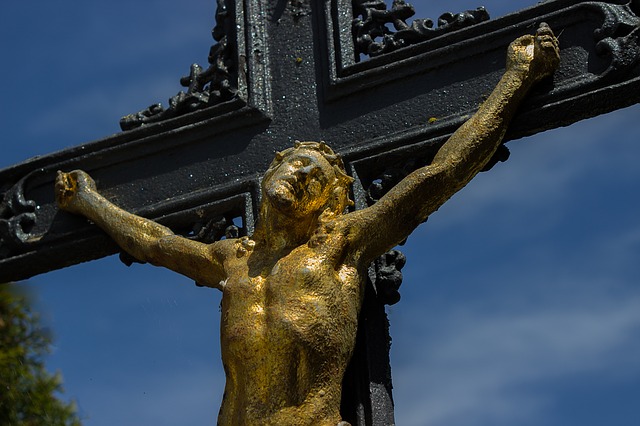Last blog, I mentioned that many think “Christ’s descent” merely refers to his death and burial. This explanation may appeal to modern reason, but it ignores Scripture.
The next theory has at least some plausibility. John Calvin, the father of the Reformed movement, Joseph Cardinal Ratzinger, the recently retired pope, and other esteemed theologians have stated that “descendit ad inferos” refers, at least in part, to what Jesus experienced on the cross rather than where He went after death. Let’s consider this possibility next.
In Matthew 27:45-46 we find this,
Now from the sixth hour there was darkness over all the land until the ninth hour. And about the ninth hour Jesus cried out in a loud voice, saying, “Eli, Eli, lama sabachthani?”, that is “My God, my God, why have you forsaken me?”
Without a doubt, this was a pivotal moment in the history of our salvation. Jesus isn’t just feeling the depth of despair. He is experiencing exactly what He said. He was being forsaken by the Father. What it means for one person of the Trinity to forsake another is beyond our comprehension and appreciation, but this is huge. Jesus, as the representative of all of creation, is experiencing the true penalty for sin and thus is fulfilling the requirements of the Law. “The wages of sin is death”, declares Romans 6:23. “Death” in this context doesn’t just mean the cessation of heartbeat and brainwaves. It means having the presence, help and even thoughts of God completely taken away from you. Eventually, this is what all the damned experience.
Some think of spiritual death as referring to descending to the dead, or in other words, going to Sheol. Therefore, Jesus had to first physically die on the cross and then descend to the dead in Sheol. The book of Revelation is rather explicit in describing what “death” fully entails. It speaks of a “first death”, which is physical, and a “second death”. In Revelation 20, the post-judgment day lake of fire (Hell) is the second or spiritual death, not Sheol.
We often think of Hell as being horrible because of fire and maggots and demons. These things are child’s play in comparison to being forsaken by God. Forsakenness is the termination of all joy and hope. Forsakeness is what makes the final judgment the worst thing of all. The ill effect of being forsaken can been seen in Jesus. Jesus is the Son of God. Jesus is fully aware of the plan. Still, when forsakenness comes upon Jesus, He is wild-eyed desperate and cannot even remember why this is happening to Him. Forsakeness is spiritual death. Often we think of spiritual death as following our physical death. Just about everything else concerning Jesus was unusual, why not also this? Jesus experienced the second death first. He was forsaken and then He physically died.
Jesus experiences forsakenness so that we never have to experience it directly. Through baptism we die with Christ. We experience our “second death” first by being baptized and later physically dying.
What Jesus experienced on the cross was hellish, the worst thing anyone can experience, but “descendit ad inferos” speaks of going to a place with a purpose not experiencing hellish conditions, as we will see. It sounds bad, but really it is the beginning of good for Jesus. When Jesus descends to the lowest place, He is going there in triumph. The lowest point in His experience is on the cross when He is forsaken, but inferos is low for other reasons.
Lumping Jesus’ forsakenness with His descent into Sheol creates more confusion than clarity. The only reason to group them is misguided use of the word, “Hell”. Our English word “hell” can trace its roots through several languages to the Greek word “Hades”, but in current usage it does not mean the same thing. Jesus is going through “hell” as an adjective, but He doesn’t exactly go to “Hell” the noun. He does eventually go to Sheol. Sheol was the place of both the unrighteous and the redeemed at that point. It is a place of comfort and torment, depending on what side the chasm you are on. Sheol is referred to as the lowest place in the Old Testament.

